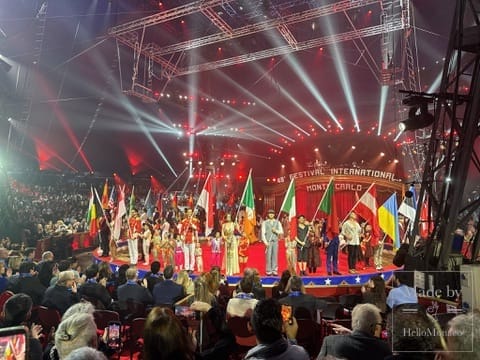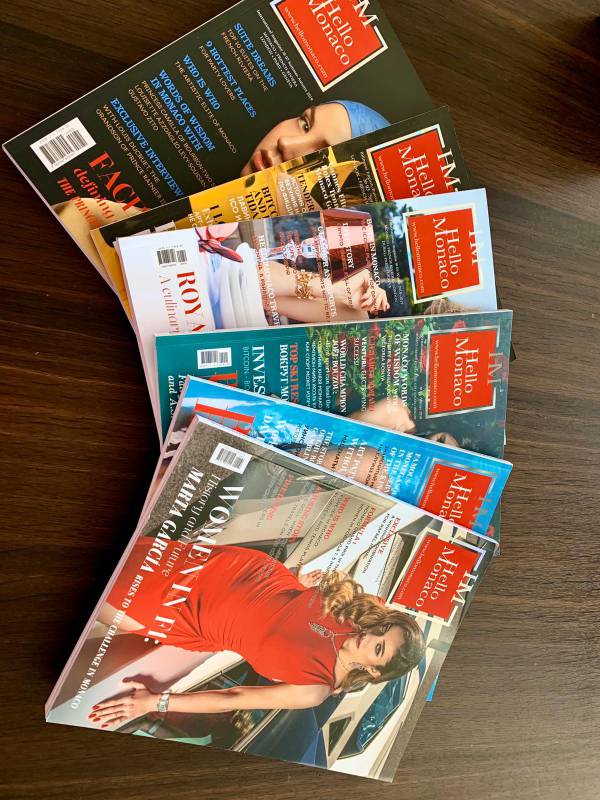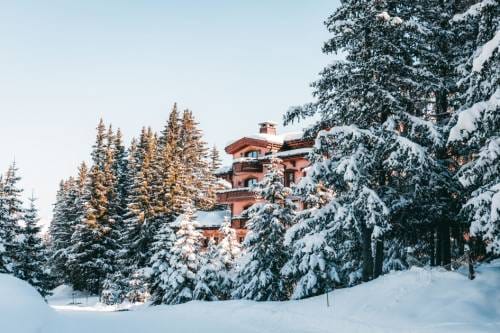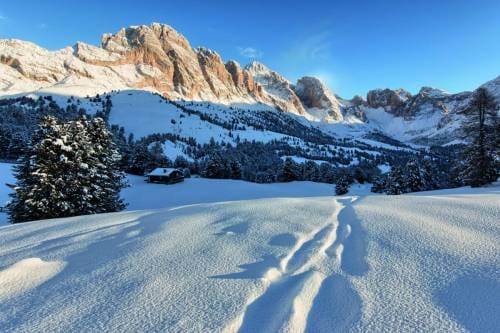In this article, we introduce the town of Grasse which is also known by many as the capital of perfume.
What comes first to your mind when the town of Grasse is mentioned? You may know that this place is often classed as a world capital of perfumes. Grasse and its surrounding area boasts 30 large perfume factories which produce essences and formulas that are later sold on to Dior, Lancôme, and Estee Lauder.
The town itself was founded in the 11th century and used to be the Bishop of Antibes’ residence. In 1482 Grasse passed under the control of the French crown alongside the entire Provence region. Back then it was one of the largest leather production centers in Europe.

Role of Catherine de Medici in the perfume industry
Catherine de Medici was born in Florence in 1519 to the family of Duke Urbino Lorenzo de Medici, the nephew of Pope Leo X. At just a few days old, she lost both her parents. In 1523, Giulio de Medici became the Pope under the name of Clement VII. Ten years later he offered his great-niece Catherine as a bride to the son of the French King, Henry of Orleans.
The young lady thus left her native Italy and was brought to the French Riviera on the Papal galley. Her wedding was celebrated on 28 October, 1533, attended by the Pope himself and the King of France, Francis I.
When it comes to the Grasse perfumery, a commonly heard story is that of the “fragrant gloves” associated with the name of Catherine de Medici. Catherine’s wedding was indeed held not far away from Grasse. And even if she never visited the town in person, her contribution to the development of the perfume industry was remarkable. She was the one to introduce the fashion of fragrant gloves to the French royal court.

The story of perfumed gloves
Perfumed gloves used to be traditional in Italy. At the end of the 15th century, Muzio Frangipani, a descendant from an old Roman family, invented a powder of musk, civet and iris root. Catherine de Medici is said to have used this mixture to mask the odors of the Fontainebleau Palace.
The habit of “perfuming” ones accessories, clothes and everything around quickly spread across the court of Louis XIII. Aromatization was done by specially trained people who then created a guild of glove-perfumers in 1656.
Then came the era of Louis XIV, with the issuing of a special patent for this craft (called “Les statuts des maîtres gantiers parfumeurs”). The perfume industry began to expand rapidly in France.
Grasse and Grenoble were where the main factories were concentrated. Gloves were then perfumed in two ways: either impregnated with aromatic solutions or rubbed with a fragrant wax on the inside or outside. The perfume house of Galimard was the first to launch a large scale production of perfumed gloves.

After the end of the 16th century, most of Grasse residents started showing interest in perfumes. Rose, jasmine, and violets were grown in every garden in the hope of obtaining wonderful fragrances. Back then this activity was not subjected to any tax, the royal treasury being more interested in wheat, vineyards and olive trees. Everything changed with the reign of Louis XIV who imposed a tax on glove perfumers. It was rumored that he himself did not particularly enjoy taking a bath or a shower. This is a bit of an exaggeration though, as the“Sun King” was not indeed a big fan of water procedures, but did not go completely unwashed either. Louis XIV would in fact wipe his body with perfumed napkins.
At the same time, this monarch, while taxing the perfumers, also allowed the production of roses and jasmine on a large scale.
The glove perfumery business did not have an easy start. In 1685, ontop of the tax, Louis XIV abolished the Nantes decree (granting the right of free worship to the Huguenot Protestants). Persecution then spread throughout the country, including Grasse, and many artisans were forced to leave their homes.
The second event that compromised the perfumed glove production in Grasse was the French Revolution. After all, the nobles happened to be the main consumers of perfumed accessories while the revolutionaries were striving to destroy the nobility as a class.
Despite all these upheavals, Grasse stood firm. In 1834, a glove maker Xavier Jouven invented a cutting press that simplified the production of perfumed accessories. Manufacturers thus got an opportunity to reach a wider range of consumers.

The gloves that went hand in hand with the creation of the perfume industry, have since gained their independence. Perfumes and gloves are now two separate industries. Recently, however, the trend for perfumed gloves and accessories is experiencing a rebirth. Last year, Guerlain with the Agnelle studio produced two pairs of perfumed gloves available in its Champs Elysées boutique. L’Artisan Parfumeur did the same, creating a limited collection of perfumed accessories.
The oldest perfume houses of Grasse: Galimard and Fragonard
Galimard is considered to be the oldest perfume producer, founded in 1747. It has long renounced its perfumed glove production, however. The local museum and laboratory introduces you to the extraction of flowers essences. Jean Morel, nicknamed the “nose” of Galimard, currently works on its premises. Morel did not study in any of the prestigious perfumery schools. His mastery was passed on to him by his grandfather. According to him, it takes at least 10 years to master the art of smell recognition. An average person remembers 200-300 odors, while a perfumer knows a thousand.
Another perfume house of Grasse, famous for many a decade, is Fragonard. Eugene Fuchs opened his perfumery in 1926 within the walls of a leather workshop and named it after the artist Jean-Honoré Fragonard. His father happened to be one of the artisans producing most perfumed gloves. A visit to the factory nowadays is to journey into the craft’s history that remained unchanged for years and to become acquainted with modern perfumery. The place where the perfumes are kept is a suite of rooms, with bags full of roses, jasmine petals and sandal wood bark. Other halls introduce you to both the oldest and the most modern methods of perfume extraction.

The oldest method of obtaining perfumes is hot “enfleurage” or maceration. Perfumers would immerse dried flowers in a glass vessel with warm vegetable oil or animal fat heated at 50-70°C. The heat transforms the aromatic molecules into an oil, which is then filtered through several layers of material and poured into a dark glass vessel. A “fondant” is thus produced. To enrich the perfume, a variety of spices and fragrant essences are added. With the advent of distillation, the thick fatty compounds started to be washed in alcohol, which could absorb the smells. A mixture of fat and alcohol was whipped thoroughly and left to stand for a long time until the substances became separated into layers. The alcohol was then filtered to permanently remove the traces of fat.

Rare jasmine
Grasse is famously surrounded by fields of roses, lavender, tuberose, orange blossom, mimosa and very rare jasmine. Nowadays, only one species of this flower is used in perfumery –“jasmin grandiflorum” which was first cultivated in Persia. In 1560, Spanish sailors introduced the jasmine tree to Grasse which later became a must for the French perfumery. Sadly, only 10 hectares are left from the former jasmine plantations in Grasse. Even such brands as Chanel and Jean Patou struggle to obtain this flower. Because of its rarity, the jasmine of Grasse is considered one of the most expensive ingredients in the perfumery industry. Top perfumers claim, however, that quality perfumes can only be obtained from the jasmine essential oil.
Today, this small town on the French Riviera is a favorite with perfume lovers and creators of their own fragrances. It is also a pilgrimage for Patrick Suskind readers. His famous novel “Perfume” is about a perfumer who killed young girls within the walls of Grasse in a quest to create the perfect fragrance. If you love this book, come to see Grasse in late autumn or winter. If you enjoy reading Bunin, who used to be a long term resident, then come here in spring when the fields are blooming and the May rose fragrance fills the medieval streets. In summer, this place smells of lavender. From the end of August to October, jasmine reigns.
No matter the season, the town of Grasse or the capital of perfume is sure to delight your senses.








